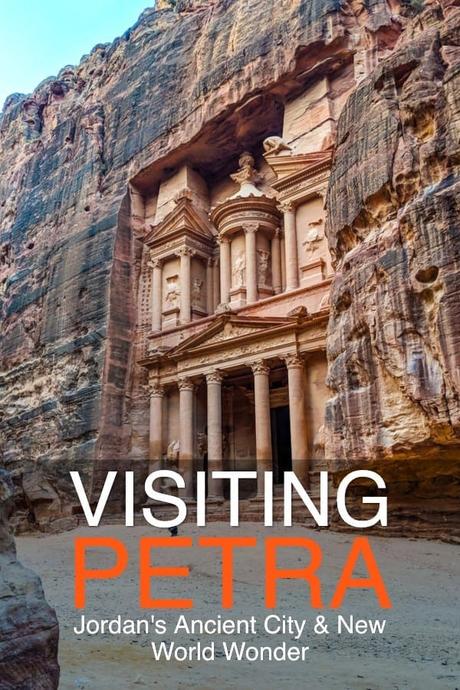Petra, the Lost City, is the most important tourist site in Jordan. It's also one of the 7 "new" Wonders of the world. Petra is a UNESCO World Heritage Site (The World Heritage Site title means that Petra is protected internationally as a culturally important landmark) and one of the most famous and important archaeological sites in the world. You can wander around it, sometimes alone, like an adventurer. As one of the New Seven Wonders of the World (Decided by popular vote on the internet), Petra is one of the must-see places in the Middle East.
History enthusiasts will love the Nabatean, Greek, Byzantine, and Roman architectural features. Scientists are using satellite imagery to find even more parts of the city and by some estimates, less than 1/5th of the site has been excavated. It's all waiting for you to explore.
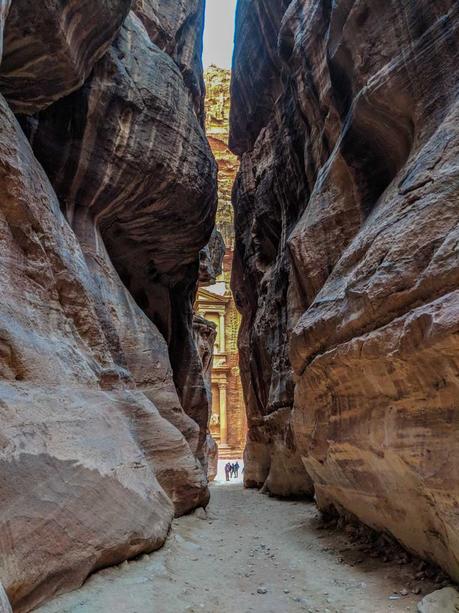
Petra is the former capital of the Nabatean Kingdom. These days it's a 60-square kilometre protected archaeological site that includes canyons, buildings carved out of stone walls, Nabataean amphitheatres, Christian monasteries, and wide boulevards. Petra is known as the Lost City because it was unknown (or lost) to the Western world for centuries. The site is still revealing secrets to this day as archaeologists discover new sections of the ancient city and important junction on the ancient Silk Road inside Petra.
The history of the place is fascinating and even the modern history reads like a modern Indiana Jones (more on him below). A Swiss traveller called Johann Ludwig Burckhardt went looking for the main town of the ancient country of Nabatea. He knew, from his research, roughly where this mystical city might lie. He managed to sneak his way into the city and was the first Westerner to do so for centuries. Once the news got out in Europe, adventurous travellers made it a priority to visit. Burckhardt is the author of many books, including "Travels in Syria and the Holy Land", which you can read on Project Gutenberg.
Petra is called the "Rose City" and you can probably see why from the photos.
Where is Petra?
About two-thirds of the way down the country of Jordan, past the dead sea, and within 20km of the border with Israel, Petra sits just over 800m (2600 feet) in the mountains. The elevation means that temperatures can drop sharply at night, even in summer. The sun's rays are ever more penetrating during the hot months.

The bedouin camp in Wadi Rum and the accommodation owners in Aqaba assured me that everything would be fine. And it was. When asked about the dangers of flash floods in the two most important tourist areas of the country, people just clicked their tongue and shook their heads. It's not a big thing. "No tourists were hurt", was the gist of their answers.
The city of Petra has drainage canals right through it. The water system ingeniously controls floods and preserves water for drier times. So there's little chance of you getting swept away unless you're standing in a canal at the wrong moment.
Even in the narrow valley routes through the mountains, there are ledges and higher areas to move to if the water gets too high. Dramatic scenes of tourists being swept away are unlikely.
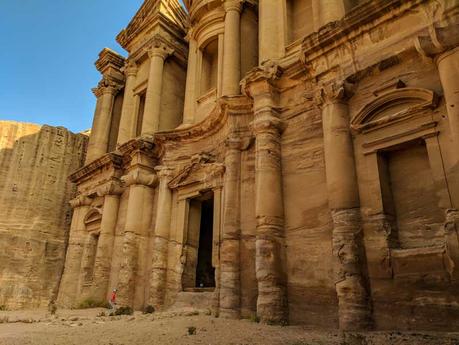
Costs
One day costs 50 JD if you stay a night anywhere in Jordan. That will include most people but if you're taking a day trip over from Israel or another country, the entrance fee rises to 90 JD (around 130 USD), which receives complaints from the kind of people that complain about this kind of thing.
Two days in Petra costs an extra 5 JD on top of the one day pass. I highly recommend taking a two-day trip to the city. Three days is even better.
Get the Jordan Pass! It's worth it. Especially if you'll be spending any more than a day or two in the country. It works out so much cheaper in the long run and saves time on queuing.
The Pass makes total sense if you plan to spend 2 days at Petra. I walk fast and am reasonably fit, but I still needed a couple of days to see the highlights. If you don't have much time, you could see everything in one day if you start at 6 am and finish when the park closes. But that will be an exhausting itinerary even for the fittest if you plan to walk. Grabbing donkeys, camels, and horse and cart transport will save you a bit of time.
The Petra By Night event is very popular but isn't included on the Jordan Pass ticket. It wasn't something I was particularly interested in, so I passed on this one. I asked a lot of people if they'd done the night excursion and what they thought. The vibe was that Petra by Night is a fair-to-middling experience. When something costs money (quite a bit of money in this case) people tend to rate the experience higher.
But don't take my word for it or even the word of other travellers. Do your research, decide whether it might be something you'd enjoy, and please don't go just for the Instagram photos. Search images.google.com for "Petra by night". You'll see pretty much the same photo over and over.
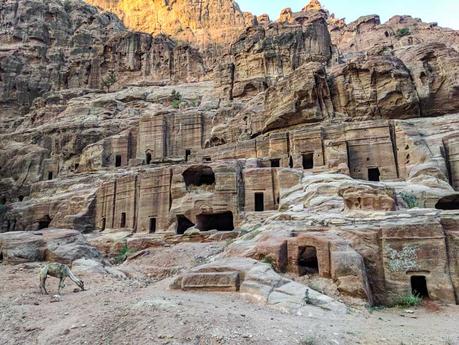
The Indiana Jones - Petra Connection
Maybe you remember the closing scenes in Indiana Jones and the Last Crusade where the Treasury (Al Khazneh) of Petra featured prominently as a backdrop? Judging by the 5000 people a month that search for "Indiana Jones Petra" on Google, it seems to me that a lot of people remember this scene.
You can visit that exact spot but don't expect it to look quite the same. The treasury is magnificent but you can expect to find tourists and touts swarming around in front of the building. Go early in the morning and you'll avoid most of this activity. The narrow walkway (Siq) that leads to the treasury is so absurdly cinematic that it feels like Hollywood forgot part of their set.
Get there early because this spot reaches selfie stick saturation levels later in the day. The Siq is only 4m wide in some parts and it can get crowded.
Around the Treasury, you'll get plenty of offers from "local guides", basically kids with an entrepreneurial streak, who will guide you the "dangerous" walkways to a lookout a hundred feet above the Treasury itself. It's a fantastic spot but you can visit a lookout spot only metres away from this one, for free, by walking around the back way.
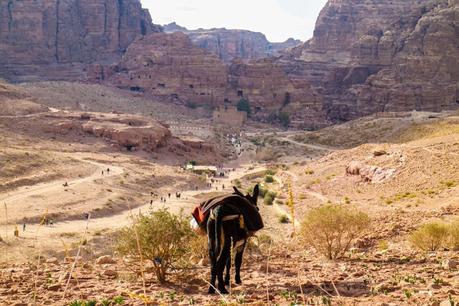
I asked the tourist police near the Treasury if I could walk up the easier route myself. They said no. But I wasn't convinced. Seems to me that it's just the locals creating their own business. And I wouldn't deny them some cash if it was reasonable.
The alternative route is a lot more work, but the climb is part of the fun and there are some great views on that side too.
By the way, there's nothing inside the Treasury, apart from a flat foyer or entrance way. The facade is what people come to see. And very pretty it is too.
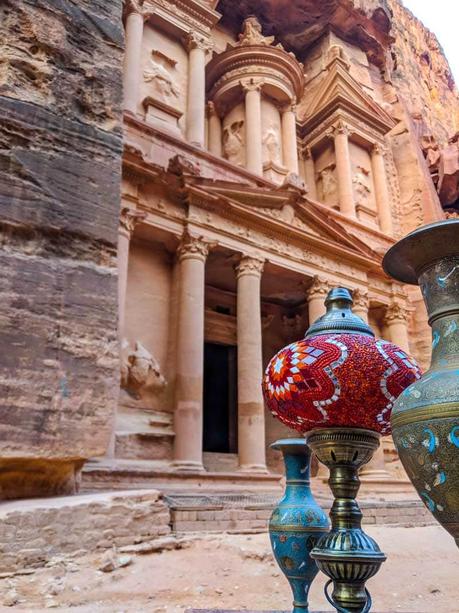
The Monastery
One of my favourite parts of the city but maybe because it was early morning in November and there were few people around. The hike up turned out to be a little different than expected.
The monastery looks like it was built by giants. The sheer size of the door doesn't even make sense. It's only when you see another person walk through the entrance do you realise just how big the facade of the monastery really is.
What's strange is how there are no ticket checks, or inspectors, or signs of any sign once you pass by the monastery. In fact, you could enter Petra from this side and not pay an entrance fee. I'm not saying you should do that. Please don't! But if anyone knows why this is so, let me know.
The Monastery of Petra looks like something built by giants
About 5 minutes from the Monastery are some super steep jagged cliffs. For the next 20 minutes of walking, the most beautiful vistas of Jordanian valleys, gorges, mountains, flatlands, and even Israel in the distance are all around.
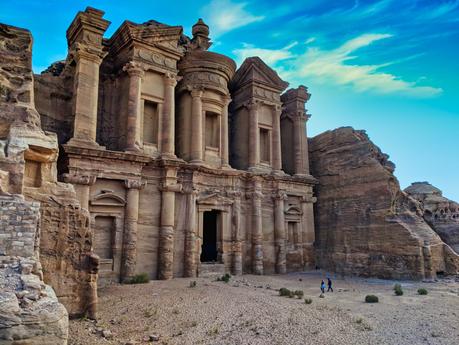
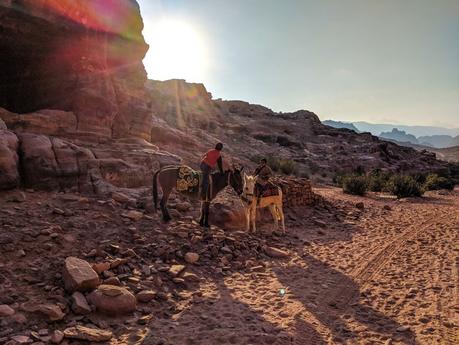
I continued walking from the Monastery to what's called the Bedouin Village. It's a long way and not something I'd recommend. But I'm stubborn and can walk all day when I'm enjoying the scenery.
Tourism, Environment, & Social Impact
So how has the Disneyfication of Petra affected the local people, the environment, and Jordan, in general?
Petra was one of the places, along with Wadi Rum, that accelerated the tourism growth in the country.
From a sociocultural stance, tourism in Petra has had a positive impact.
Although the way of life of the local people has changed dramatically, even for the Bedouin who remain connected to the land, living standards (health, sanitation, education) have all improved. Is that not a good thing? Some people would argue against it but Petraians are in favour of progress.
The site of the ancient city appears to be well cared for. Vehicles are generally not allowed to enter and although there is some modern construction, this is limited to shacks and temporary stalls where locals sell trinkets. A report from 2011 by the Department of Sustainable Tourism found that " Many of the stands located inside the archaeological site are made of materials that do not fit the appearance of the site (plastic sheets covering wooden beams and roofs to create a shelter), most of these materials are also in a bad condition (torn cloth and spotted wood boards); another serious issue is the littering caused by the trash thrown by workers of these shops in nearby areas. "
Tips for Visiting Petra
- The entrance to the Lost City opens at 6 am. If you can make it that early, all the better. Get inside before there are lots of people around and the temperatures are cooler. At this time of day, the beautiful sunrise colours of the Jordan desert makes everything look amazing.
- The town of Wadi Mousa is incredibly hilly. You'll have to climb some pretty steep streets if you plan on walking around the town. Most people take taxis back to their accommodation from the Petra gates.
- I spent a few hours at the Movenpick Resort Cafe & Bar, which by any standards, is excellent. Not cheap, mind you, but a superb spot for people watching, catching up on reading, or in my case, some admin for my work.
- In winter (November - February) bring a hat, gloves, and scarf for 6 am departures. It's cold at that time of day. The first 30-60 minutes of walking will be on a gentle downward gradient so there's not much chance of breaking a sweat. Unless you run.
- If you really want to avoid the crowds, get a horse and cart to deliver you to the Treasury for some tourist-free photos of probably the most famous icon in Jordan.
- I stayed at the Candles Hotel, which is looking a bit old, but does the trick for a couple of days. And it's very good value. There's a mosque right next door, so I'd recommend asking which room you're getting. Unless you're a heavy sleeper, the call to prayer at 5.30am from a gigantic loudspeaker 20 feet from your window is a bit of a shock to the system. On the plus side, Candles is only a few minutes walk from the gate of Petra. Very convenient, especially after a day on your feet. There's also a good value buffet from 6 pm in case you want to skip pizzas and kebabs.
When To Visit Petra
From June to September you can expect a burning hot sun, especially at midday, when the sun's rays come straight down between gaps in the valley walls. From November to February the days are pleasant (bring a jacket) but nights can be very cold. November is the rainiest month with October and December close behind.
Summer is less crowded because of the high daytime temperatures. If you can stand the heat, the Lost City is yours to experience in relative peace.
Visit at midday and only the lizards and snakes will join you. November, the month I visited, is part of the high season but I expected to see more people. The fact that I'd just been in over-touristy Rome a few days before might have changed my expectations. There was plenty of room for everyone.
Getting From Petra To Amman and Vice Versa
It takes about 3 hours to drive from Amman and two from Aqaba. But beware, travelling by local bus can be time-consuming and frustrating.
